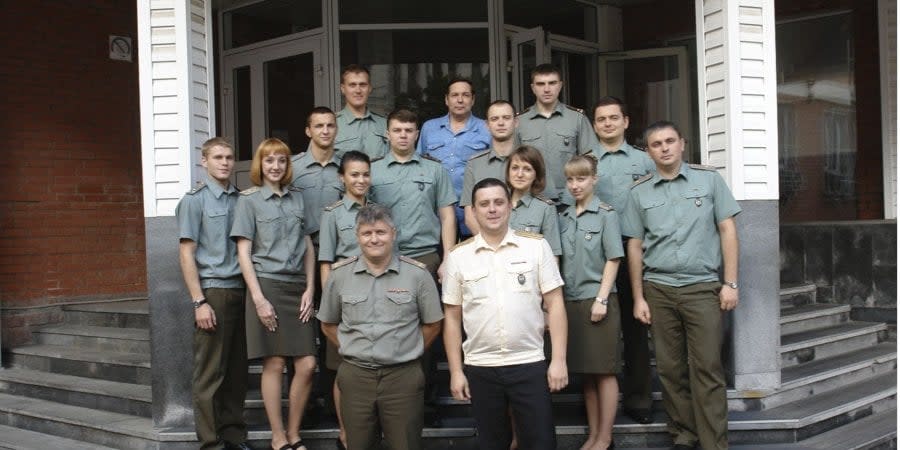OSINT investigators identify over 30 Russians programming missiles to strike targets in Ukraine

Experts from Russian independent medium the Insider, the Bellingcat open-source investigative group and German newspaper Der Spiegel in a joint investigation released on Oct. 24 identified more than 30 Russian military engineers who guide missiles towards Ukrainian civilian targets.
Read also: Missile strike causes partial blackout at major fertilizer factory in Rivne
According to the Insider, the investigation found a secret unit within the Main Computer Center (MCC) of the Russian Armed Forces that calculates the flight coordinates for precision missiles, and identified 30 of its military engineers – most of whom are young men and women with backgrounds in information technology and even computer game development.
Believing that the MCC’s connection to guided missile targeting was highly likely, the Insider decided to test this hypothesis and examined phone call logs of Major General Robert Baranov, the head of the center.
Read also: Kyiv calls on partners to speed up delivery of air defense systems amid latest missile attack
A study of his calls from Feb. 24 to the end of April 2022 showed that each time before a cruise missile launch (known from open sources) he received a call from one particular number, which, as the Insider has determined, belongs to Colonel Igor Bagnyuk, who is registered at the same address as the other known MCC officers – 19 Znamenka Street.
“Then we studied the call logs of Bagnyuk himself and found he was in active contact with more than 20 military engineers and I.T. specialists from the MCC,” reads the report.
“Based on clusters of recurring calls, we reconstructed a team of 33 military engineers reporting to Colonel Bagnyuk.”
Moreover, by studying those data, The Insider was able to link many individual cruise missile strikes to specific MCC units and found correlations between missile types and specific MCC personnel.
The MCC unit the Insider identified consists of three teams, each of which programs the flight paths of one specific type of high-precision missile: the ZM-14 (Kalibr, sea-based), 9M728 (aka R-500, Iskander (land-based) operational-tactical missile systems), and X-101 (air-based).
The military engineers who program guided missile trajectories have different backgrounds. They range from having spent their entire careers in the Army or Navy and subsequently becoming military engineers, to having been recruited from civilian professions, usually IT-related.
Read also: Ukrainian business community sums up effects of Russian missile attacks
When the Insider began contacting the missile guidance specialists using the phone numbers from the call logs, they all admitted that these phone numbers belonged to them but categorically denied they worked at the Main Computer Center or had anything to do with the missile attacks on Ukraine.
For example, one of them admitted his name was Sergey Vladimirovich Ilyin, but said he was “self-employed” and worked as a plumber: “I have nothing to do with any calculations, except for those needed for plumbing work,” he told investigators.
Lieutenant Artem Vedenov, answering the number found in the call logs, did not deny he was Artem Vedenov, but said he worked on a pig farm and did not know anything of value: “I do not mind talking to you but what can I tell you, how to butcher pork? Or how to pluck a chicken properly?”
Read also: Critical facility damaged in Russian missile strike on Odesa Oblast
Captain Yuri Nikonov said he was a bus driver and claims he worked in the Computing Center were “nonsense.”
Major Ivan Popov said he was just learning to code in Python and did not know anything about any computer center, and it was pointless to ask him about guided missiles: “It’s like me asking you about ballet now, you know?”
Lieutenant Yekaterina Chugunova replied, “I have a flower shop. You are definitely mistaken.”
Read also: Russian missile attack in Kyiv Oblast causes ‘significant damage’ to energy infrastructure
When the Insider showed some of the mission guidance specialists a photo of them standing in military uniforms with computer center patches, they appeared totally confused.
For example, Vladimir Vorobyev who had initially said he had nothing to do with the MCC, upon being shown his photo in uniform answered cryptically: “I see it for the first time in my life. Especially in uniform...”
As Bellingcat was able to establish, this photo could have been taken in the courtyard of the Ministry of Defense building on Znamenka Street.
Read also: Ukraine restores 15 objects damaged by Russian mass missile attack, says Zelenskyy
Phone records of Bagnyuk and his subordinates in the weeks prior to the Oct. 10 strikes show an increase in call activity, starting from Oct. 2 and peaking on Oct. 9. At the same time, 11 calls were made to the mission guidance engineers on the last day before the strikes. There were no calls for about two weeks before October 2, which is also consistent with the lack of reports of cruise missile use.
“Astonishingly, the mass murder of civilians in Ukraine has become quite routine for MCC officers; at least it is obvious from Bagnyuk’s phone calls on the very morning when Russia started the October strikes that the first thing he did, as if nothing had happened, was to contact a coin selling website (Bagnyuk is an avid numismatist, or coin collector), and his colleague Major Roman Kurochkin was haggling with prostitutes over the price of services as guided missiles were hitting children’s playgrounds,” the report says.
Help NV continue reporting on the Russian invasion
Read the original article on The New Voice of Ukraine

 generic
generic 